Lilian D. A. Wanzare
AfriHate: A Multilingual Collection of Hate Speech and Abusive Language Datasets for African Languages
Jan 15, 2025



Abstract:Hate speech and abusive language are global phenomena that need socio-cultural background knowledge to be understood, identified, and moderated. However, in many regions of the Global South, there have been several documented occurrences of (1) absence of moderation and (2) censorship due to the reliance on keyword spotting out of context. Further, high-profile individuals have frequently been at the center of the moderation process, while large and targeted hate speech campaigns against minorities have been overlooked. These limitations are mainly due to the lack of high-quality data in the local languages and the failure to include local communities in the collection, annotation, and moderation processes. To address this issue, we present AfriHate: a multilingual collection of hate speech and abusive language datasets in 15 African languages. Each instance in AfriHate is annotated by native speakers familiar with the local culture. We report the challenges related to the construction of the datasets and present various classification baseline results with and without using LLMs. The datasets, individual annotations, and hate speech and offensive language lexicons are available on https://github.com/AfriHate/AfriHate
State of NLP in Kenya: A Survey
Oct 13, 2024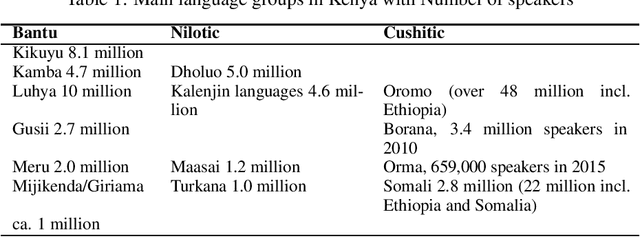
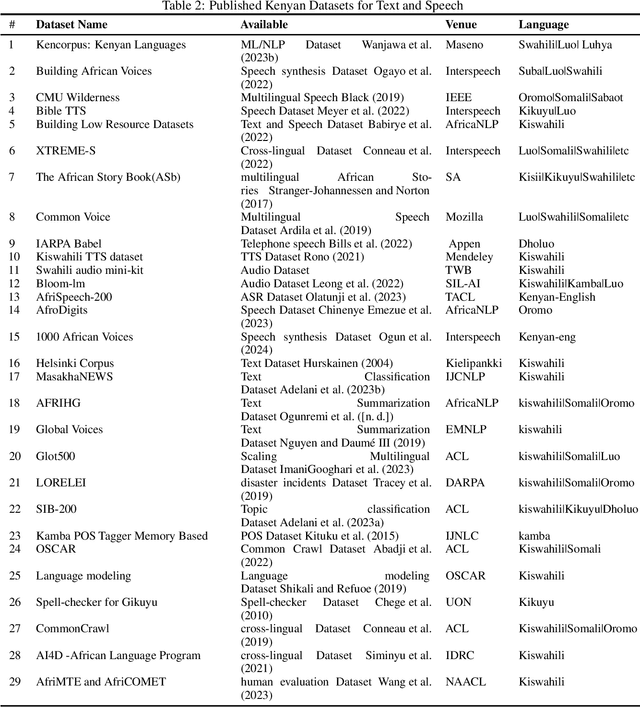
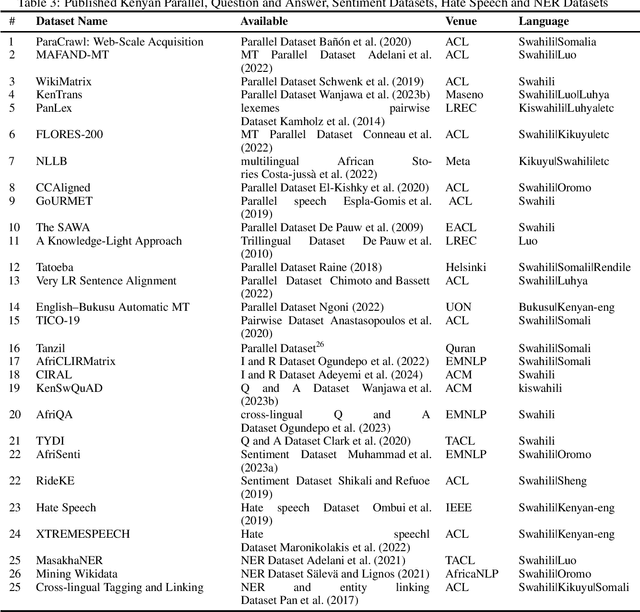
Abstract:Kenya, known for its linguistic diversity, faces unique challenges and promising opportunities in advancing Natural Language Processing (NLP) technologies, particularly for its underrepresented indigenous languages. This survey provides a detailed assessment of the current state of NLP in Kenya, emphasizing ongoing efforts in dataset creation, machine translation, sentiment analysis, and speech recognition for local dialects such as Kiswahili, Dholuo, Kikuyu, and Luhya. Despite these advancements, the development of NLP in Kenya remains constrained by limited resources and tools, resulting in the underrepresentation of most indigenous languages in digital spaces. This paper uncovers significant gaps by critically evaluating the available datasets and existing NLP models, most notably the need for large-scale language models and the insufficient digital representation of Indigenous languages. We also analyze key NLP applications: machine translation, information retrieval, and sentiment analysis-examining how they are tailored to address local linguistic needs. Furthermore, the paper explores the governance, policies, and regulations shaping the future of AI and NLP in Kenya and proposes a strategic roadmap to guide future research and development efforts. Our goal is to provide a foundation for accelerating the growth of NLP technologies that meet Kenya's diverse linguistic demands.
Detecting Everyday Scenarios in Narrative Texts
Jun 10, 2019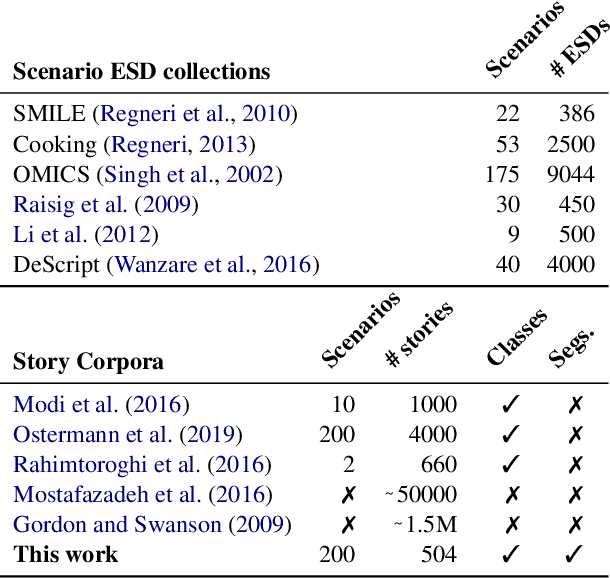
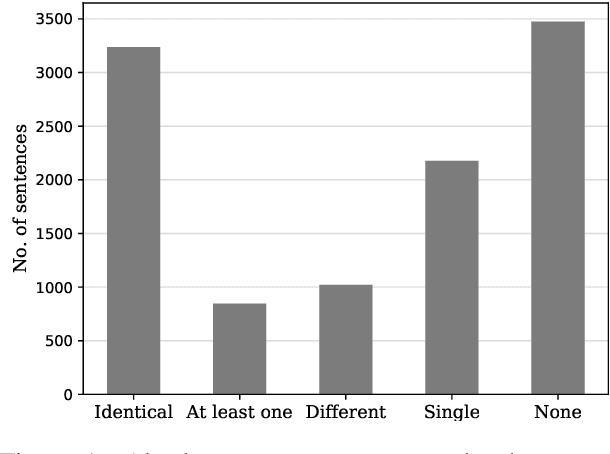
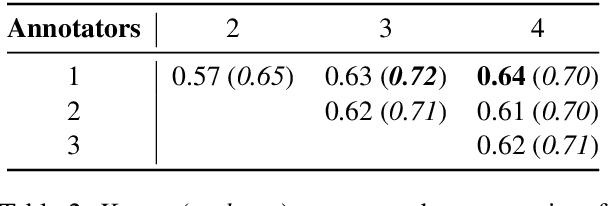
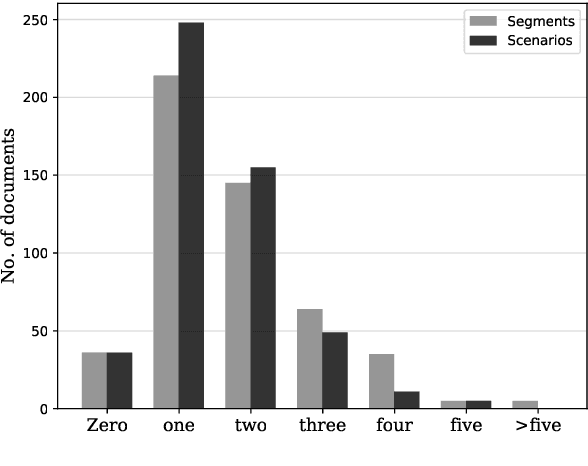
Abstract:Script knowledge consists of detailed information on everyday activities. Such information is often taken for granted in text and needs to be inferred by readers. Therefore, script knowledge is a central component to language comprehension. Previous work on representing scripts is mostly based on extensive manual work or limited to scenarios that can be found with sufficient redundancy in large corpora. We introduce the task of scenario detection, in which we identify references to scripts. In this task, we address a wide range of different scripts (200 scenarios) and we attempt to identify all references to them in a collection of narrative texts. We present a first benchmark data set and a baseline model that tackles scenario detection using techniques from topic segmentation and text classification.
 Add to Chrome
Add to Chrome Add to Firefox
Add to Firefox Add to Edge
Add to Edge